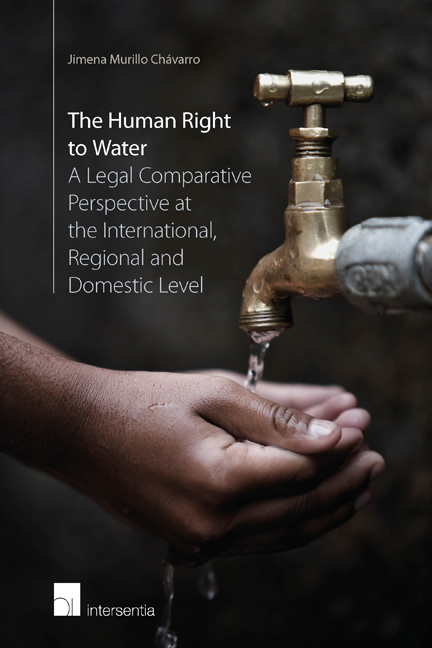 The Human Right to Water
The Human Right to Water Book contents
- Frontmatter
- Dedication
- Contents
- List of Abbreviation
- Table of Cases and Other Materials
- Table of Treaties and Other Instruments
- Chapter 1 General Introduction
- Chapter 2 Emergence, Definition and Core Content of the Human Right to Water
- Chapter 3 Recognition of the Human Right to Water at the International Level
- Chapter 4 Recognition of the Human Right to Water at the Regional Level
- Chapter 5 Recognition of the Human Right to Water at the Domestic Level: a Case Study Approach
- Chapter 6 Extraterritorial Application of the Human Right to Water in a Transboundary Watercourse Context
- Chapter 7 General Conclusions
- Bibliography
- Index
Chapter 1 - General Introduction
Published online by Cambridge University Press: 15 December 2017
- Frontmatter
- Dedication
- Contents
- List of Abbreviation
- Table of Cases and Other Materials
- Table of Treaties and Other Instruments
- Chapter 1 General Introduction
- Chapter 2 Emergence, Definition and Core Content of the Human Right to Water
- Chapter 3 Recognition of the Human Right to Water at the International Level
- Chapter 4 Recognition of the Human Right to Water at the Regional Level
- Chapter 5 Recognition of the Human Right to Water at the Domestic Level: a Case Study Approach
- Chapter 6 Extraterritorial Application of the Human Right to Water in a Transboundary Watercourse Context
- Chapter 7 General Conclusions
- Bibliography
- Index
Summary
Water resources are used for a large number of societal activities, such as agriculture, industry, recreation and human consumption, as well as energy production. Additionally, water is necessary for the survival of all other living things. We might think that we have enough water on Earth to accomplish all these activities since there are large quantities of this resource on the planet. However, the majority of societal activities require freshwater resources, which only represent a small percentage of that large amount of water on Earth. In fact, only 2.5% of the world's water is fresh; the remainder – 97.5% – is seawater (saline water) and undrinkable. In addition, the greater portion of freshwater resources (approximately 68.7%) is found on ice and permanent snow in the Antarctic, the Arctic and in the mountainous regions. Further, 29.9% of freshwater is found in groundwater, and only 0.26% of the total amount of freshwater is concentrated in lakes, rivers and reservoirs. This last percentage represents the amount of water that is easily available for the listed societal activities. As a result, these activities have become competing uses for limited water resources.
Freshwater resources are unevenly distributed on the planet. While water is abundant in some regions, in other regions it is extremely scarce. People living in areas where water is scarce may face difficulties in fulfilling their essential needs, since water is necessary to maintain life and good health, and to produce food. Therefore, access to sufficient safe drinking water is indispensable for all human beings to survive. In certain places available drinking water is becoming dangerously low and in other places water is highly polluted and not suitable for human consumption. Climate change is expected to make some arid areas even drier. In coastal areas, sea levels rising increase the potential for the intrusion of saline water into fresh groundwater in coastal aquifers. Additionally, water stored in glaciers and snow cover are projected to decline due to climate change, thus reducing water availability during dry periods in regions supplied by melt water.
- Type
- Chapter
- Information
- The Human Right to WaterA Legal Comparative Perspective at the International, Regional and Domestic Level, pp. 1 - 6Publisher: IntersentiaPrint publication year: 2015


